Ready to unlock the full potential of your small room? This post will explore the space-saving benefits of built-in bunk beds. We’ll cover exciting designs and important safety issues. We’ll also find smart storage, customization options, and cheap alternatives for the budget-conscious. Let’s embark on this journey to transform your small space into a big dream come true!
Benefits of built-in bunk beds for small rooms
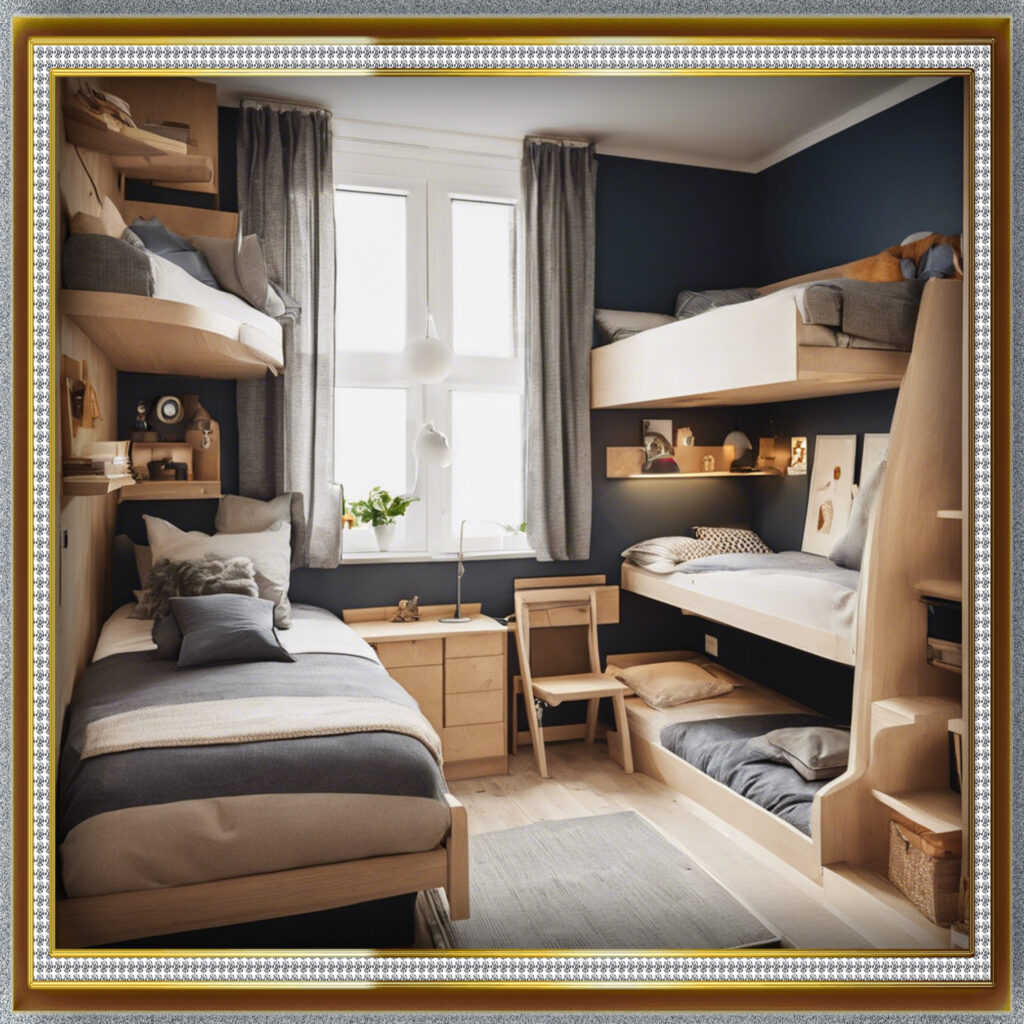
Built-in bunk beds for small rooms help save space. They are great for small rooms. Let’s explore how these innovative sleeping solutions can transform your living space.
A. Maximizing floor space
Built-in bunk beds are a game changer when it comes to maximizing floor space. By utilizing vertical space, they free up valuable square footage for other activities.Built-in bunk beds for small rooms help keep the floor space open for playing. Here’s a comparison of floor space usage:
|
Bed Type |
Floor Space Used |
Additional Space Gained |
|---|---|---|
|
Two single beds |
70-80 sq ft | 0 sq ft |
|
Standard bunk bed |
40-50 sq ft |
20-30 sq ft |
| Built-in bunk bed | 30-40 sq ft |
30-40 sq ft |
B. Ideal for shared bedrooms.
Built-in bunk beds are great for shared rooms. Built-in bunk beds for small rooms make it easier to share a bedroom. They save space in homes with many kids. They offer several benefits:
-
Privacy: Each bunk can be designed with curtains or dividers.
-
Personal space: Individual reading lights and shelves can be incorporated.
-
Efficient use of room dimensions: Custom fit to maximize the available space.
C. Creating multi-functional rooms
A key benefit of built-in bunk beds is their ability to create multi-functional rooms. By freeing up floor space, you can incorporate:
-
Study areas with desks and bookshelves.
-
Play zones for children.
-
Lounge spaces with seating.
-
Storage solutions, like built-in wardrobes or drawers,
These multi-functional rooms save space and boost your home’s functionality. Built-in bunk beds can turn a small bedroom into a versatile space. They can serve many purposes.
Design options for built-in bunk beds for small rooms.
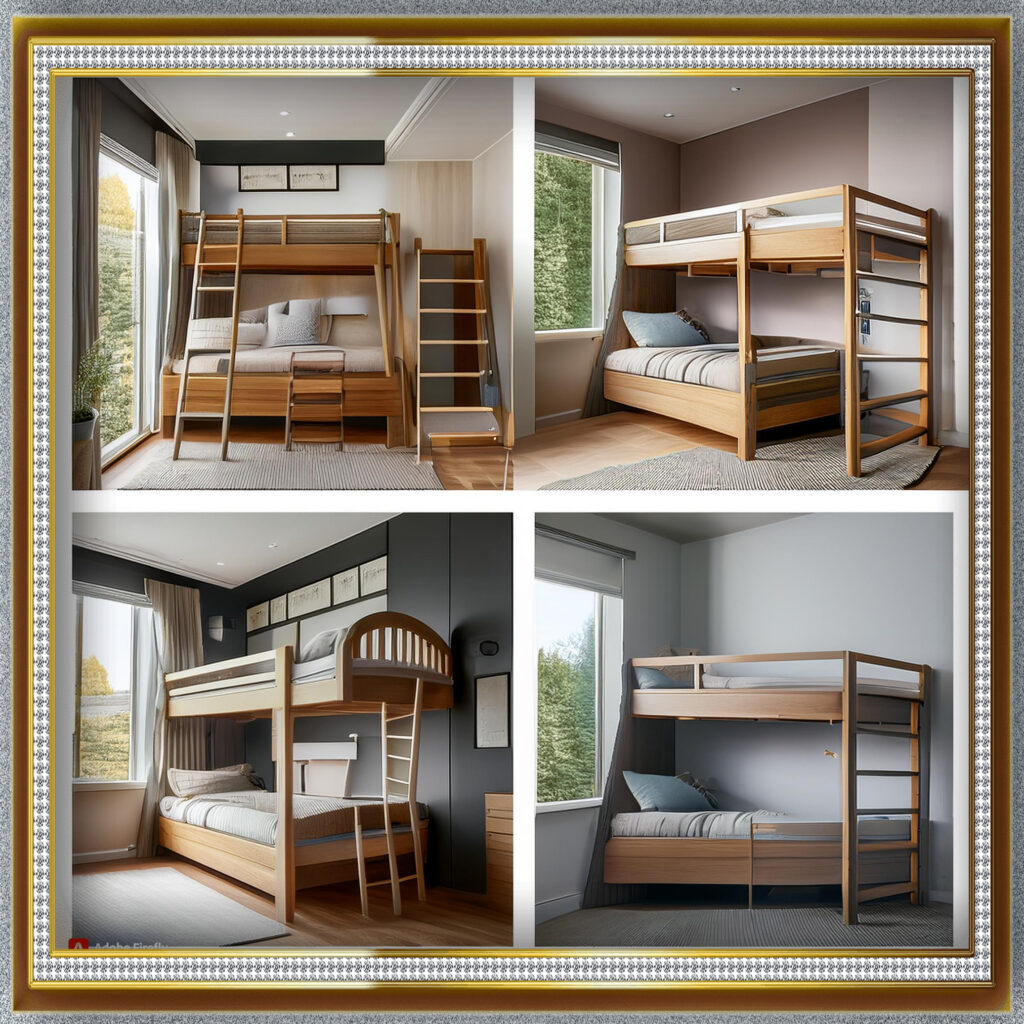
Built-in bunk beds offer a wide range of design opportunities. Let’s explore some popular, innovative designs. They can transform your small room into a stylish, functional space.
A. Custom shapes for unique spaces
Built-in bunk beds can fit any room shape. They maximize the use of awkward corners and sloped ceilings. Here are some ideas:
-
Curved designs for round rooms
-
Angled beds for attic spaces.
-
Alcove-fitted bunks for nooks and crannies.
B. Loft-style arrangements
Loft-style bunk beds maximize vertical space, creating a multi-functional area beneath. Consider these options:
-
Study area with a desk and shelves.
-
Cozy reading nook with built-in seating.
-
Play area for younger children.
C. Vertical stacking designs
Vertical stacking is perfect for rooms with high ceilings. Here’s a comparison of different vertical stacking options:
|
Design |
Pros |
Cons |
|---|---|---|
|
Triple bunk |
Sleeps more people | Requires higher ceilings |
| Alternating stairs | Easier access to top bunk |
Takes up more floor space |
| Ladder access | Space-saving |
May be challenging for younger children |
D. L-shaped configurations
L-shaped bunk beds are ideal for corner spaces and offer unique benefits:
-
Creates a separate sleeping area for each occupant.
-
Allows for more storage or desk space.
-
Perfect for siblings sharing a room.
We’ve explored various design options. Now, let’s consider the safety of built-in bunk beds. We need to ensure a secure sleeping environment.
Safety considerations
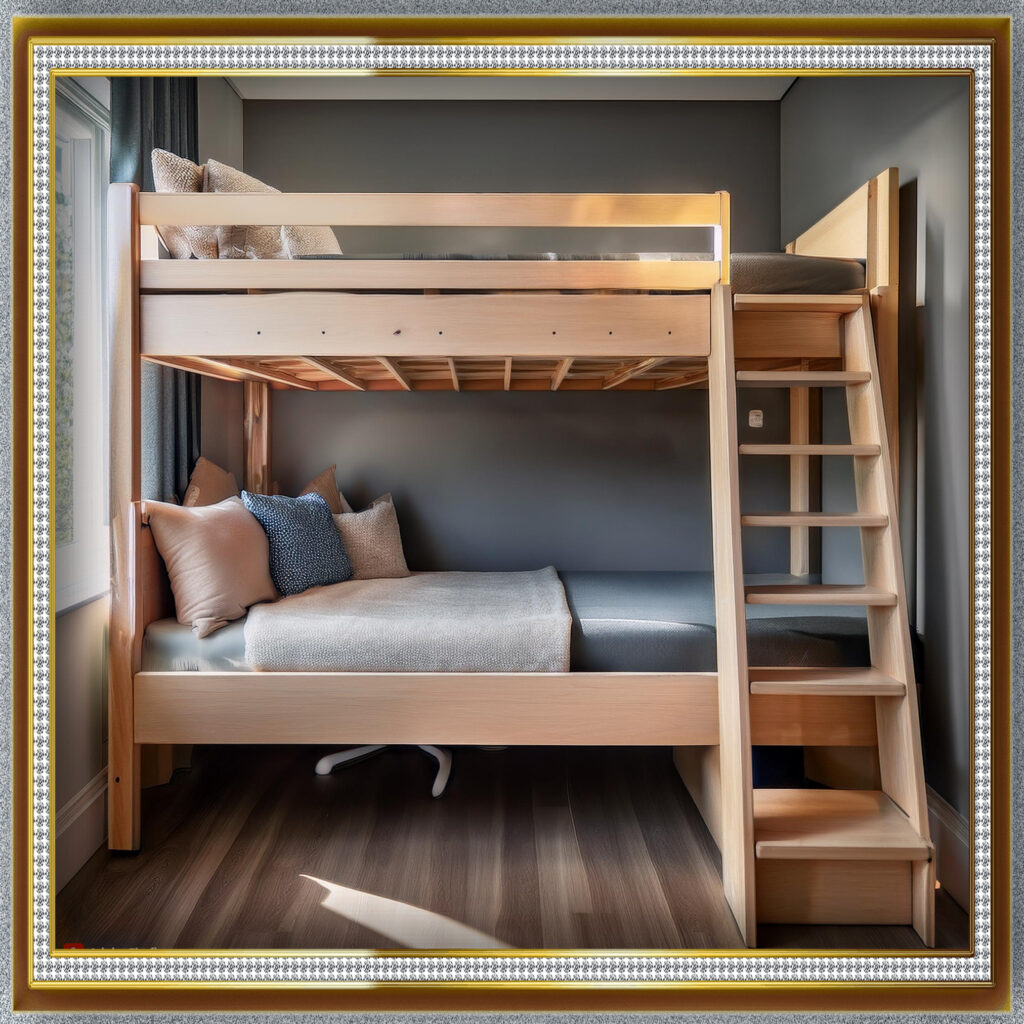
When it comes to built-in bunk beds, safety should always be a top priority. Let’s explore key safety tips for a secure sleeping environment for your family.
A. Safe climbing access
Providing safe access to the top bunk is crucial. Built-in bunk beds for small rooms can have stairs to climb safely. Here are some options to consider:
-
Sturdy ladders with non-slip steps
-
Built-in stairs with handrails.
-
Alternating tread stairs for a space-saving design.
|
Access Type |
Pros |
Cons |
|---|---|---|
|
Ladder |
Space-efficient, cost-effective | May be challenging for younger children |
|
Stairs |
Easier to climb, can incorporate storage |
Takes up more space |
| Alternating tread | Space-saving, unique design |
Requires practice to use comfortably |
B. Appropriate guardrails
Guardrails are essential for preventing falls from the top bunk. Consider these factors:
-
Height: At least 5 inches above the mattress
-
Gaps: No more than 3.5 inches between slats.
-
Strong brackets clamp tightly to the bed frame’s rails.
C. Sturdy construction techniques
Ensuring the bunk bed is built to last is crucial for long-term safety. Key construction aspects include:
-
Using high-quality materials (e.g., solid wood and metal).
-
Reinforcing joints with metal brackets.
-
Properly anchoring the structure to the wall.
-
Regular inspections for loose bolts or wear and tear.
By focusing on these safety tips, you can build a bunk bed. It will save space and provide a safe sleeping place for your family. Next, we’ll explore how to add clever storage to your built-in bunk bed design.
Storage solutions in built-in bunk beds.
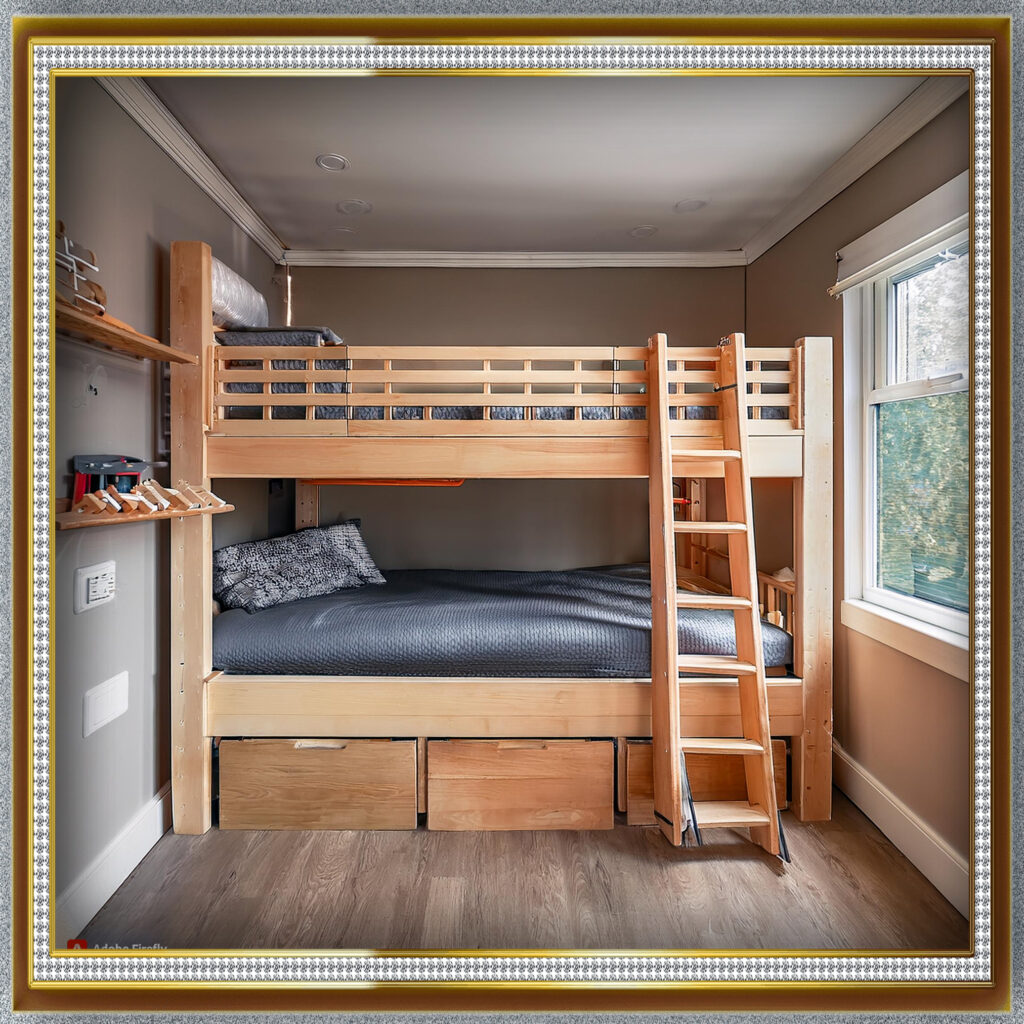
Built-in bunk beds offer excellent opportunities for maximizing storage in small rooms. Let’s explore some clever storage solutions for your built-in bunk bed design.
A. Under-bed storage compartments
Under-bed storage is a game changer for small spaces. Here are some options to consider:
-
Pull-out drawers
-
Lift-up bed bases with hidden storage.
-
Rolling storage bins
|
Storage Type |
Pros |
Cons |
|---|---|---|
|
Pull-out drawers |
Easy access, organized | Requires proper hardware |
|
Lift-up bed base |
Large storage capacity |
May be heavy to lift |
| Rolling bins | Flexible, removable |
Less organized |
B. Built-in closets and wardrobes
Adding closets and wardrobes to your bunk bed design can remove the need for separate furniture. Consider:
-
Full-height wardrobes at one end of the bunk bed.
-
Narrow closets along the side of the bed.
-
Open hanging space with curtains for a softer look.
C. Integrated drawers and shelves
Use drawers and shelves in the bunk bed to maximize space.
-
Staircase storage: If your built-in bunk bed includes stairs, use each step as a pull-out drawer.
-
Headboard shelving: Add shelves to the headboard for books and décor.
-
Footboard cubbies: Create small compartments in the footboard for personal items.
These storage solutions can make your built-in bunk beds much more useful in a small room. You can add drawers to built-in bunk beds for small rooms for extra storage. Next, we’ll explore the exciting ways to customize your bunk bed. They craft one-of-a-kind creations.
Customization possibilities
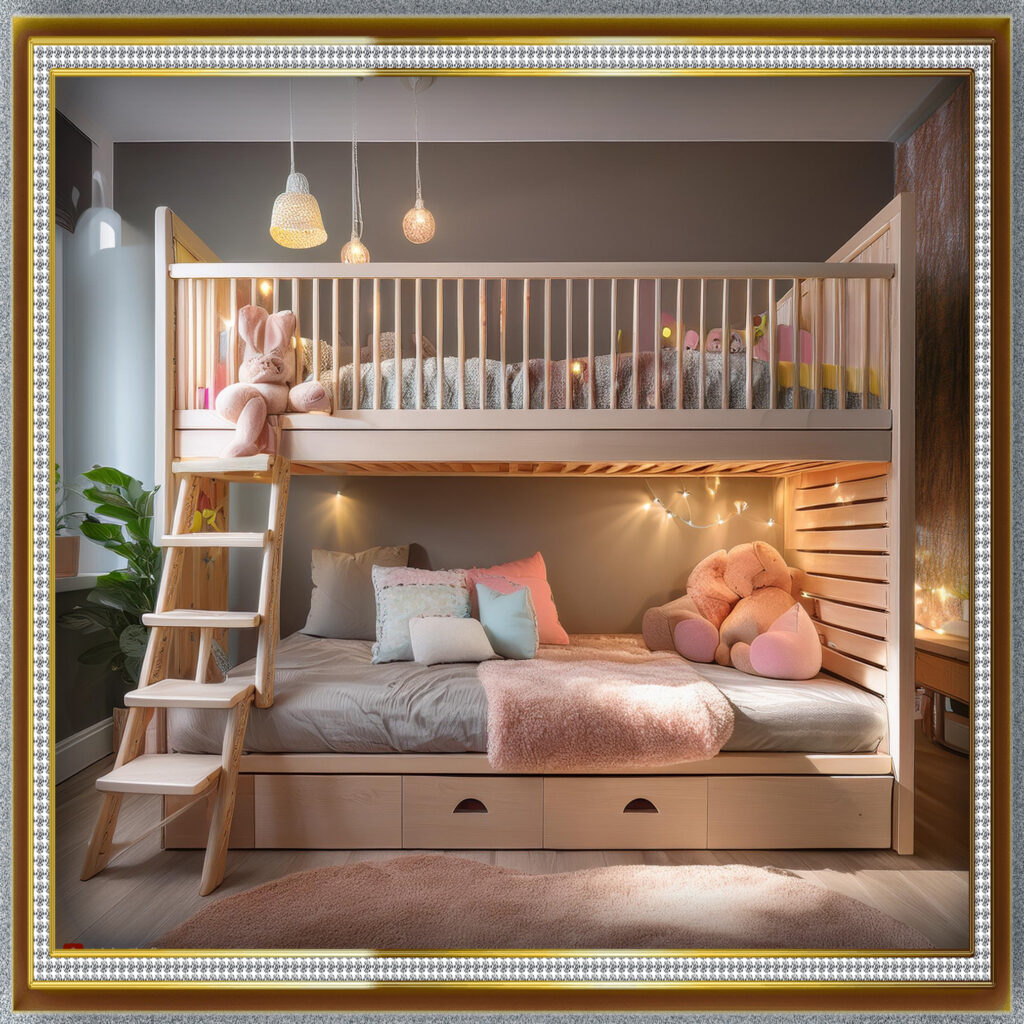
Built-in bunk beds are a blank canvas. You can customize them to fit your style and needs. Let’s explore some exciting customization options:
A. Tailoring to specific age groups
When designing built-in bunk beds, it is crucial to consider the ages of the occupants.
-
For younger children: Incorporate safety features like guardrails and easy-to-climb ladders.
-
For teenagers: Add privacy curtains or dividers between bunks.
-
For adults: Focus on sturdy construction and ample headroom.
B. Adding personal touches with lighting and décor.
Use these ideas to light and decorate your built-in bunk beds. You can add lights to built-in bunk beds for small rooms to make them cozy. They will improve the ambiance.
-
Install individual reading lights for each bunk.
-
Add LED strip lighting for a modern touch.
-
Incorporate themed decor elements (e.g., nautical, forest, or space-themed).
-
Use colorful bedding and pillows to express personal style.
C. Incorporating desk spaces
Maximize functionality by integrating workspaces into your built-in bunk bed design:
|
Desk Type |
Description |
Best For |
|---|---|---|
|
Pull-out desk |
Slides out when needed, tucks away when not in use |
Small rooms |
|
L-shaped corner desk |
Utilizes corner space efficiently |
Larger rooms |
|
Built-in shelf desk |
Doubles as storage and workspace |
Multi-purpose areas |
D. Choosing materials and finishes
Choose materials and finishes that match your décor and are durable.
-
Wood: Choose from pine, oak, or maple for a classic look.
-
Metal: Opt for powder-coated steel for a modern, industrial feel.
-
Laminate: Select from various colors and patterns for easy maintenance.
-
Paint: Use child-safe, durable paints to match your room’s color scheme.
By choosing the right options, you can make built-in bunk beds. They will save space and fit your family’s needs and style. Next, we’ll explore low-cost alternatives to custom designs for those on a budget.
Cost-effective alternatives to custom designs.
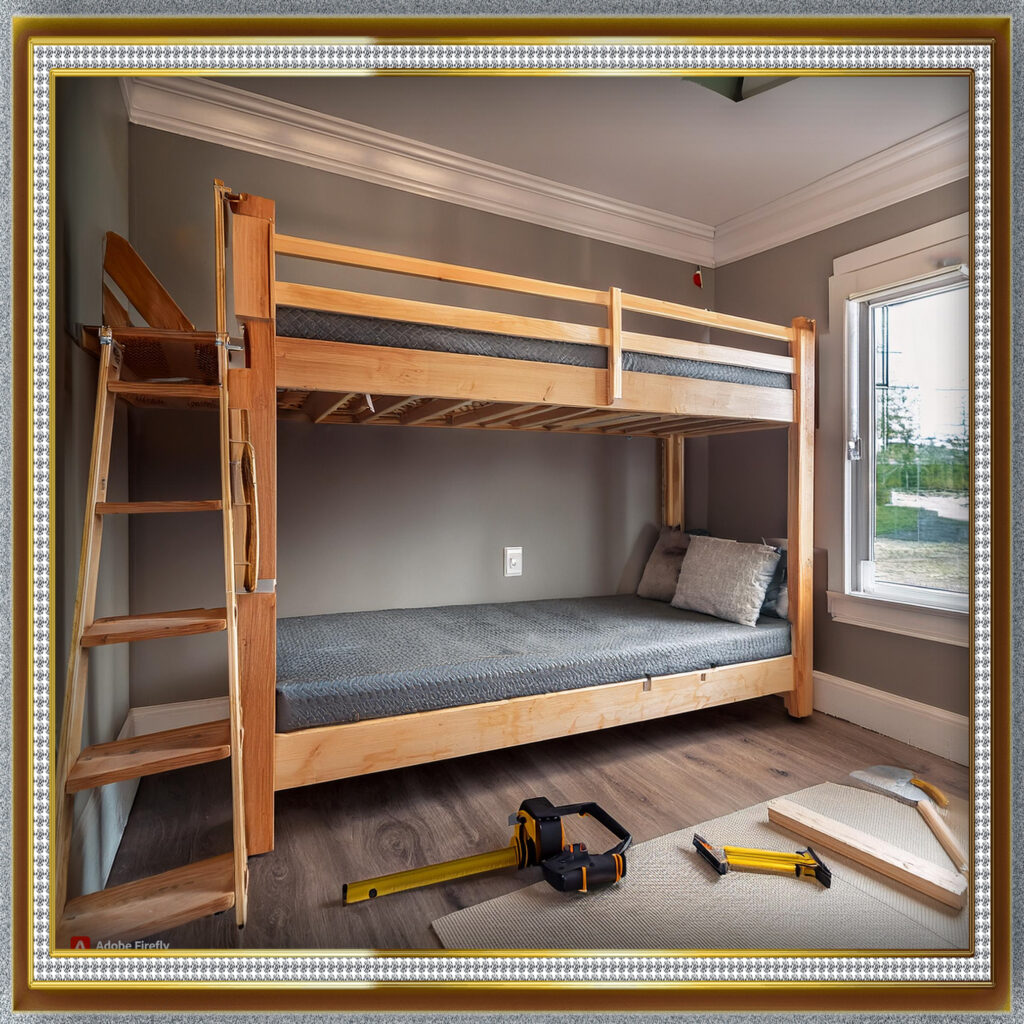
If custom-built bunk beds are too expensive, there are cheaper options. They can save space and look good, too. Let’s explore some options that won’t break the bank.
Semi-custom options from manufacturers.
Many furniture makers offer semi-custom built-in bunk beds. They balance affordability with personalization. You can choose from a range of pre-designed modules that can be adapted to fit your space with these options.
-
Pre-designed modules
-
Customizable features (colors, finishes, hardware)
-
Professional installation is available.
-
Compared to fully custom design solutions, we reduce costs.
DIY built-in bunk bed project
For handy homeowners, DIY built-in bunk beds can save money. DIY projects for built-in bunk beds for small rooms are fun for families.They also create a custom sleeping solution. With careful planning, you can build a sturdy, attractive bunk bed that fits your space.
DIY Project Comparison
|
Aspect |
Basic DIY | Intermediate DIY |
Advanced DIY |
|---|---|---|---|
|
Skill Level |
Beginner | Moderate | Experienced |
| Tools Required | Basic hand tools | Power tools |
Specialized woodworking tools |
|
Time Investment |
1-2 weekends | 2-3 weekends | 3-4 weekends or more |
| Cost Savings | High | Very High |
Highest |
|
Customization |
Limited | Moderate |
Extensive |
Modifying existing furniture
Another cheap option is to modify existing furniture. This can create a built-in bunk bed look. This method is useful if you have sturdy, repurposable furniture.
-
Convert a loft bed into a bunk bed.
-
Combine two twin beds vertically.
-
Add built-in elements to a standard bunk bed.
These options can give you the look and function of built-in bunk beds. They will cost less than custom designs. Next, we will discuss the importance of maintenance. We will also cover how to ensure your bunk bed lasts.
Maintenance and longevity
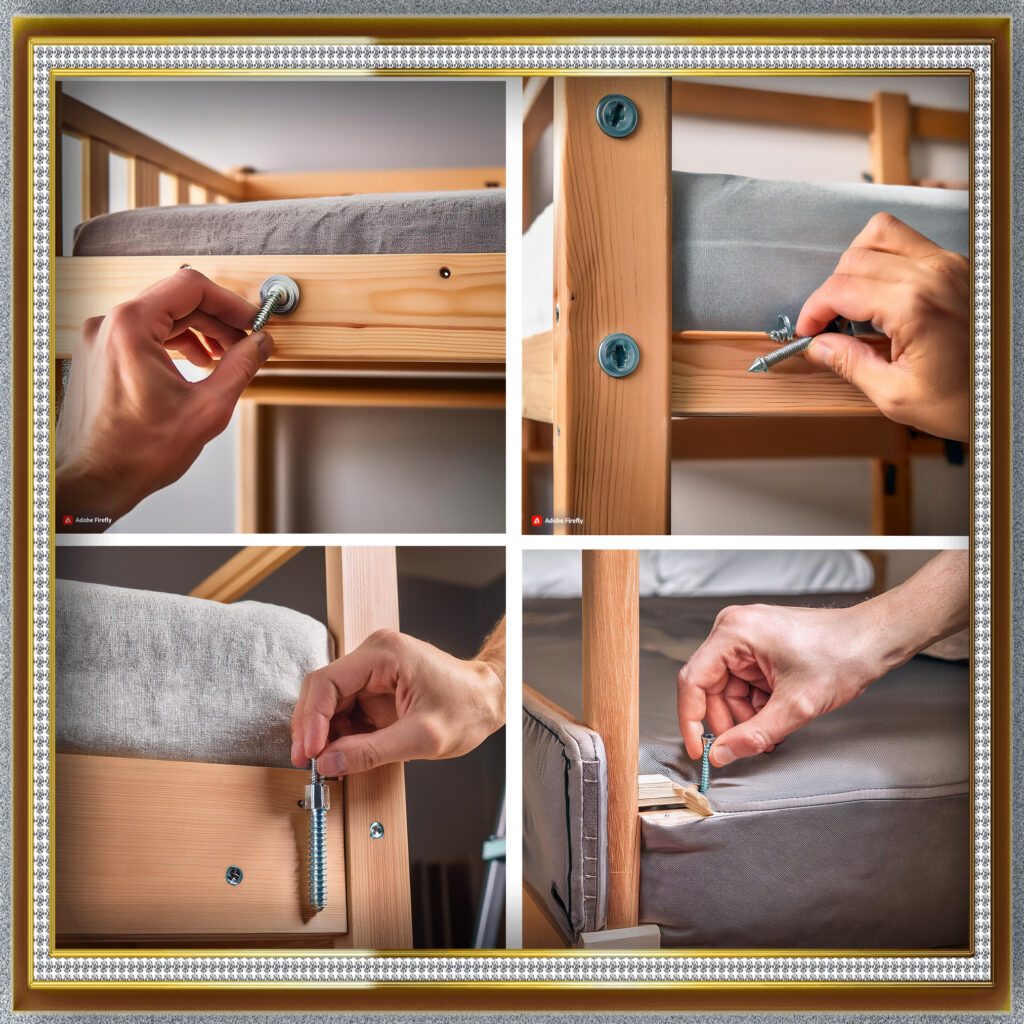
A. Potential for future room conversions
Built-in bunk beds are a smart investment. They can be converted into other rooms later. As children grow or family needs change, these structures can adapt. They can serve various purposes.
-
Home office space
-
Reading nook
-
Storage area
-
Guest sleeping quarters
|
Original Function |
Converted Use |
Benefits |
|---|---|---|
|
Sleeping area |
Home office | Compact workstation |
|
Play space |
Reading nook |
Cozy retreat |
| Bunk storage | Walk-in closet |
Maximized organization |
B. Adapting the design as children grow.
One of the key advantages of built-in bunk beds is their adaptability. As children grow, we can modify the design to accommodate their changing needs.
-
Adjustable bed heights.
-
Removable safety rails
-
Convertible study areas
-
Customizable storage solutions
C. Cleaning and upkeep tips
It’s vital to maintain built-in bunk beds. This keeps them looking good and lasting longer. Here are some essential cleaning and upkeep tips:
-
Regularly dust and vacuum all surfaces, including hard-to-reach areas.
-
Use mild, non-abrasive cleaners for wooden surfaces.
-
Tighten screws and bolts periodically to ensure structural integrity.
-
Inspect mattresses and replace them as needed.
-
Clean bedding weekly to maintain hygiene.
These practices will keep your bunk beds functional and attractive for years. With proper care, these space-saving solutions can adapt to your family’s needs. So, they are a smart choice for small rooms.
Installing bunk beds built into the wall.
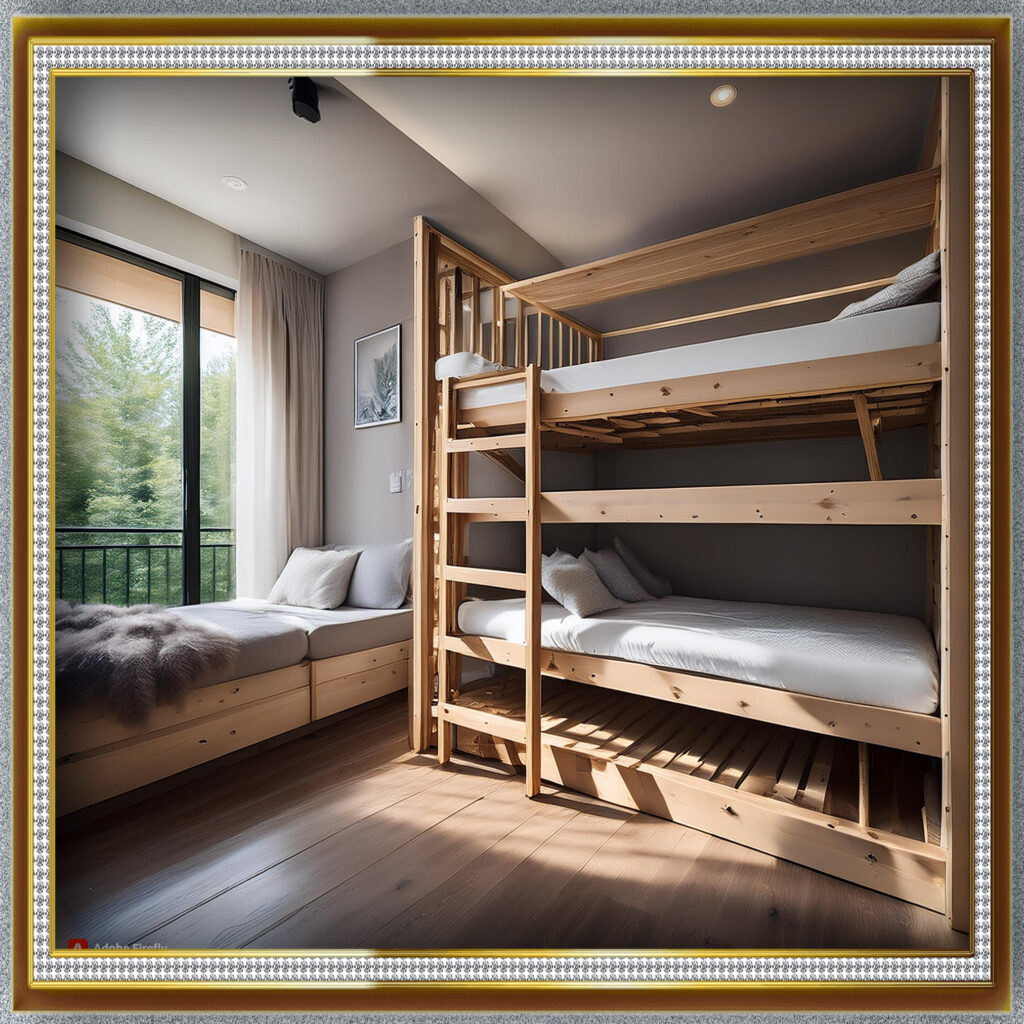
Wall-mounted bunk beds save space in small rooms. Building the bunk beds into the wall creates a seamless, integrated look. It maximizes space and gives a clean, uncluttered feel. You can customize wall-mounted bunk beds to fit the room’s dimensions. You can build bunk beds into the wall to make more room. They are a versatile, practical choice for small spaces.
FAQs:
1. How can I maximize space with built-in bunk beds for small rooms?
Answer: Built-in bunk beds for small rooms can save space. They use vertical space and add storage, like drawers or shelves. Snug designs for corners can free up floor space for other furniture.
2. What are the best storage solutions for built-in bunk beds in small rooms?
The best storage for a built-in bunk is to add storage like drawers under the bed or shelves on the side. This helps keep toys, books, and clothes organized in small rooms. Beds in small rooms have built-in drawers under the lower. These features help keep the room organized without taking up extra space.
3. Is it difficult to build DIY built-in bunk beds for small rooms?
Answer: It’s tough to build DIY built-in bunk beds for small rooms. It’s especially hard for new carpenters. But, with detailed plans and the right tools, you can create a sturdy, stylish solution for your space.
4. How can I ensure safety with built-in bunk beds for small rooms?
Answer: For safety with built-in bunk beds in small rooms, use sturdy materials. Install secure guardrails on the top bunk. Use stairs with handrails, not ladders, for easier access. Regularly check the bed’s stability and fasten any loose components.
5. How can I incorporate lighting around built-in bunk beds for small rooms?
You can add lights like small lamps or LED strips to built-in bunk beds for small rooms. They are small. They provide enough light for reading and other activities. It does this without taking up valuable space.
6. What should about weight limits for built-in bunk beds in small rooms?
For built-in bunk beds in small rooms, choose a strong, high-quality design. Use solid wood or reinforced metal. Anchor the bed to the wall for stability. This is important if adults will use the beds.
7. Can built-in bunk beds for small rooms be customized for different needs?
Yes, you can customize built-in bunk beds for small rooms to fit your specific needs. You can customize the design. Add features like extra storage, custom staircases, or specific dimensions to fit the room. This ensures both function and beauty.
8. What should I do if I need to reconfigure the room with built-in bunk beds?
Answer: If you may need to change the room, consider modular built-in bunk beds for small spaces. They can be partially disassembled or reconfigured. Or, design it for easy conversion to a different use, like adding a desk or seating area.
9. How can I ensure my built-in bunk beds for small rooms are durable?
Answer: Ensure durability by using high-quality materials and following best practices for construction. Regular maintenance will keep your built-in bunk beds in good shape. Tighten bolts and check for wear.
10. Are built-in bunk beds for small rooms a permanent solution?
Yes, built-in bunk beds for small rooms are better than freestanding beds. They are more permanent. They save space. But, plan for long-term use. Consider current and future needs of the room.
Conclusion:
Built-in bunk beds offer an ingenious solution for maximizing space in small rooms. These beds save space, have design options, and are safe. They are a stylish way to optimize small spaces. Built-in bunk beds can be customized. They can fit specific needs by using clever storage solutions.
Built-in bunk beds are a smart investment for small spaces. So, choose a custom design or a cheaper option. With proper care, these versatile beds can last for years. They will be comfortable and functional. Consider built-in bunk beds for your small room. They will create a cozy, efficient, and attractive space. They will meet your practical needs and design goals.
For more on home decor tips, visit us at decornest.online!